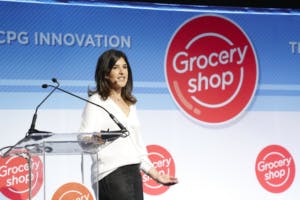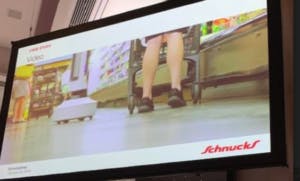This is an exciting time to be in grocery retail. Change is here and it is being embraced by the industry wholeheartedly. I know this intellectually, but I really got to dive deep and experience it firsthand last week when I had the privilege of attending and speaking at Groceryshop 2018 in Las Vegas. The conference is a grocery lover’s dream, a gathering of retailers, brands, and technology companies all acknowledging the achievements and advances, and sharing insight into this ever-evolving industry.
Talking with attendees and other speakers was eye-opening for me, tuning me into the finer details of what’s happening in the industry. A better way of putting it might be: what’s not happening in the industry these days? Growth, technology, omnichannels, new products, new trends — there is so much happening in grocery retail these days, but at Groceryshop 2018 there were four key areas that I saw as having the biggest impact on the industry.

1. Retailers are focusing on private label (and brands should, too)
Let’s be honest, private label today is not what it was a decade ago. These days, Gen Xers and family households are more likely to buy private label, and research has shown that quality and cost are the key drivers for private label purchases across all consumer segments. Shoppers who have a strong trust and affinity with a retailer have a greater likelihood of buying private label. In fact, according to the Daymon presentation at Groceryshop 2018, 53 percent of consumers shop at a specific retailer because of their private label offerings.
And those offerings today go beyond the staples of bread, flour, and milk, and retailers are showing off private label lines that feature innovative and unique products that — and this is key — can only be found at that retailer. This gives retailers a competitive edge and differentiates private label not only from brands but from other private label offerings at other retailers.
Albertsons, for example, is on track to launch 1,400 new private label products in 2018. That’s more than double the rate in 2017! Even more impressive, their O Organics line hit $1 billion in sales in January 2018.
Kroger’s Simple Truth brand hit $2 billion in annual sales and recently partnered with Alibaba to sell their brand in China.
Target plans to expand its private label offerings, and in June 2018 rolled out its new Home Goods Made by Design private label line.
Brands today need to think about retailers’ private label offerings and strategies and look at if their own offerings are filling a gap in their current assortment. They have to have something different than what already exists in their product line to drive newness and meet an unmet need for their consumer. Brands with innovative products should also start to consider private label manufacturing for retailers — it could be a value add when in talks with retailers.
2. Retailers are embracing the age of technology
Acquisitions are happening in the grocery industry that go beyond brick and mortar stores. Kroger acquired Home Chef, Albertson’s acquired Plated, and PetSmart acquired Chewy.com (to name a few). With consumers increasingly making purchases online for home and pet supplies, or entire meal plan kits that can be delivered right to their doorstep, these are the types of acquisitions that are future-proofing traditional retailers in this ever-changing retail landscape.
Behind the scenes, robotics and automation are replacing humans to drive efficiency and reduce operational costs. Albertson’s, for example, has automated their fulfillment centers and back-end operations to make picking up and deliveries more efficient. And regional grocer Schnucks now has motorized robots checking for

out-of-stocks in store, and sending real-time insights so those out-of-stocks can be acted on. The robot scans 35,000 items per transversal store. The new robots
essentially pay for themselves with the out-of-stock notifications they are able to fix in real time, plus they have enabled the Schnucks team to focus on customers, rather than the out of stocks.
These are two of the key trends and takeaways from Groceryshop 2018. In my next post, I’ll discuss the last two trends — stay tuned!
Read Part 2 here.
